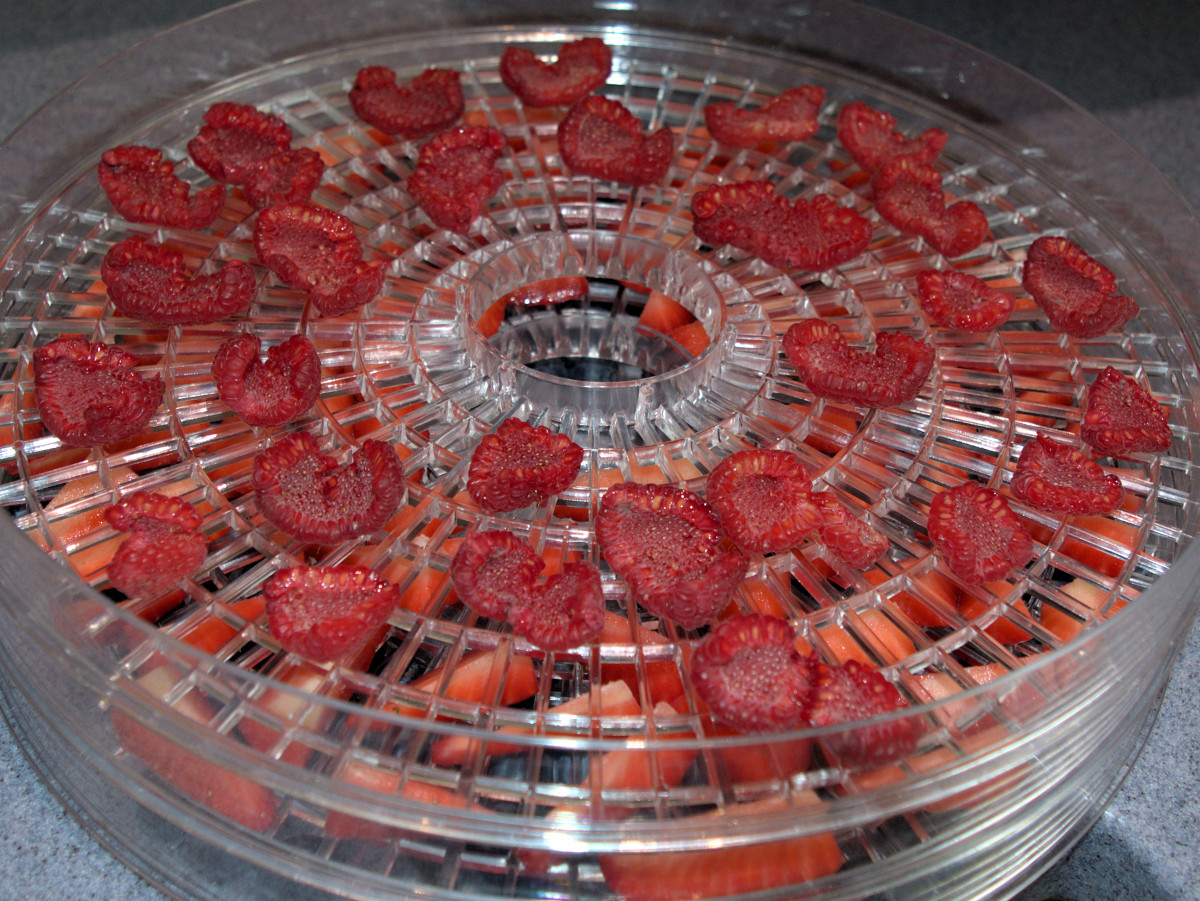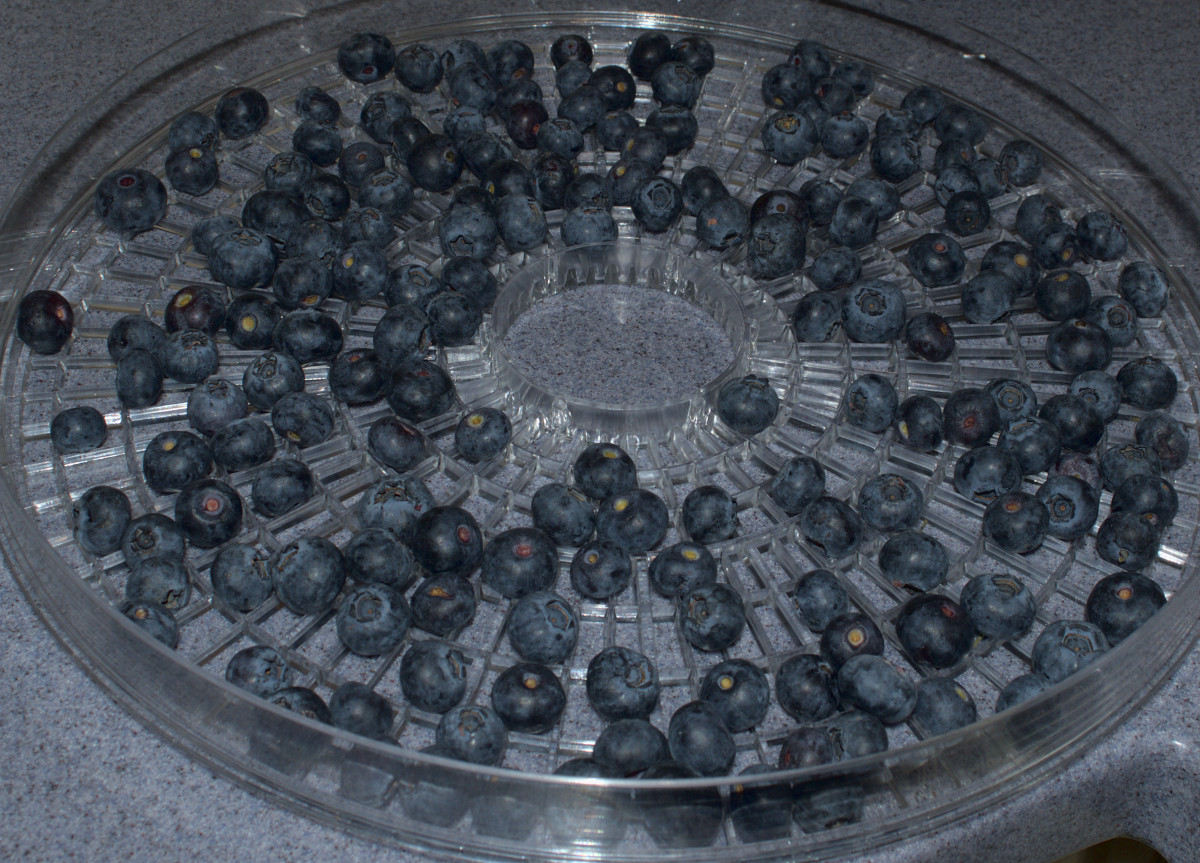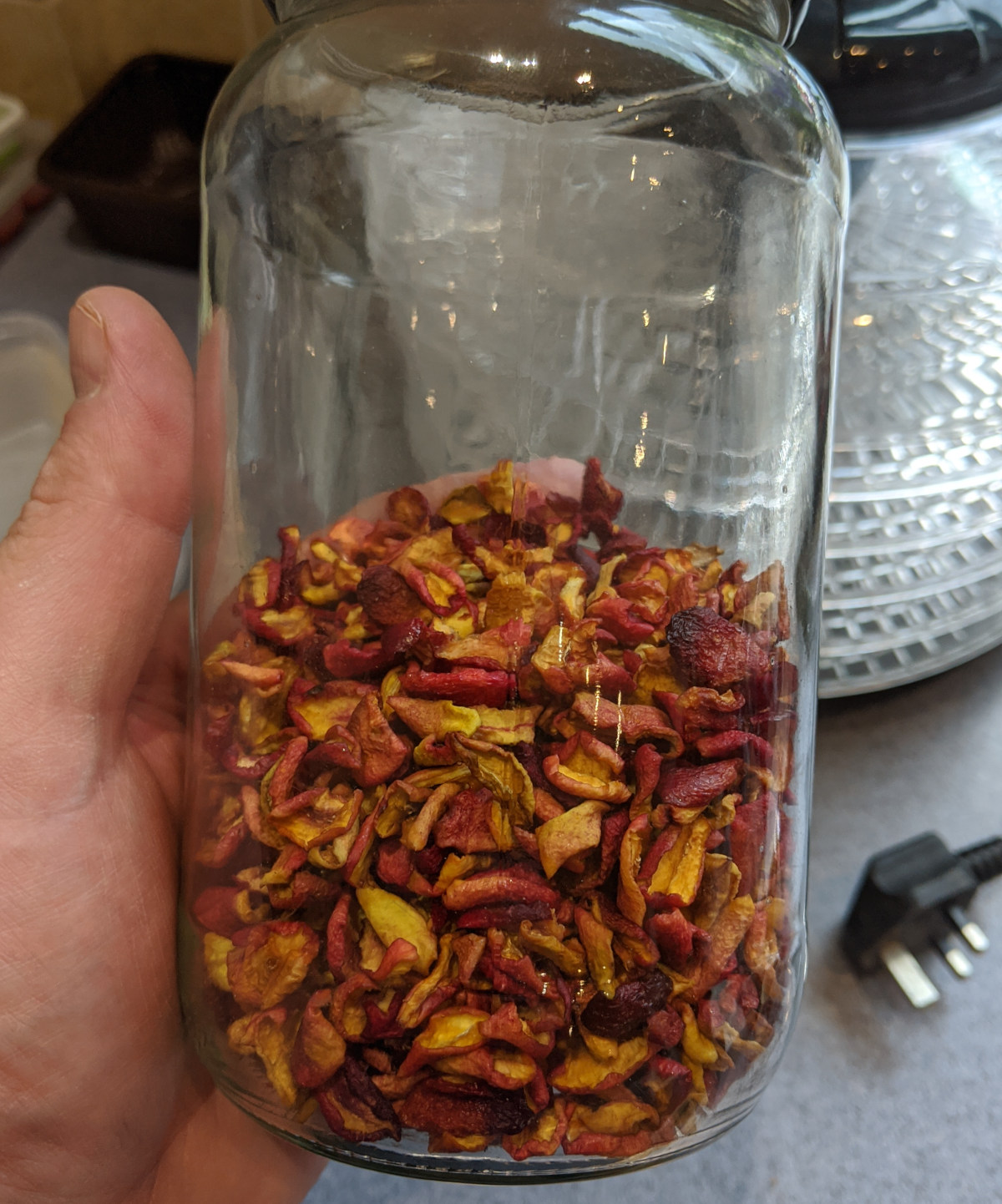Drying soft fruits. 4 methods shown, which fruits produce the best results and the one you shouldn't bother with.

I regularly dry soft fruits over the summer as there is often a glut from late spring. Removing the moisture means you can store soft fruits for later use.
Table of Contents
Drying soft fruit is a fantastic way to preserve its deliciousness and create healthy, concentrated snacks. Home food preservation can help budget conscious families live more frugally.
Drying reduces the amount of space the fruit takes up while preserving the bulk of the colour, flavour and nutrients in the fruit.
Choosing the Right Fruit:
It is important that fruits to be dried are at the peak of perfection and not damaged or bruised in any way.
Below: Select ripe fruits that are free from mould, bruises or blemishes.

It is particularly important with soft fruits like raspberries as these grow mould and spoil very easily. I split raspberries up the middle and open them out.
- Ripeness: Opt for ripe fruit with good flavour and texture. Avoid under-ripe, overripe or damaged fruit as it may not dry evenly or have the best flavour.
- Softness: Soft fruits like berries, mangoes, and kiwis are excellent candidates for drying. While firmer fruits like apples can be dried, they may require additional pre-treatment like slicing or blanching.
The fruit not to bother trying to dry: I would avoid trying to dry blackberries as the fruit sticks to the receptacle (sometimes called the rasp) in the middle and they get squished during prep.
Grapes can be problematic as they have a mould on them that can spoil the batch incredibly quickly.
Preparing the fruit:
I like to leave small berries like currants and blueberries whole, I quarter strawberries, and split my raspberries and loganberries open down the middle.
There are food safety considerations while drying fruit, it is important to watch out for potential cross contamination issues and use clean well maintained equipment. Also make sure insects can not get to the drying or prepared fruit.
Make sure fruit that has been prepared is dried immediately, The enzymes in cut fruit will accelerate the spoiling process and may discolour the end product.
Below: Here is a video of me showing how I prepare soft fruit for drying and load the dryer as well as the finished result.
Remove stalks and the green from strawberries.
Methods of preparing soft fruit for home drying:
- Washing: Gently wash the fruit in cool water to remove dirt and debris. Pat them dry with paper towels.
- Slicing: Slice the fruit into thin, even pieces. This ensures consistent drying times and prevents thicker pieces from staying moist in the centre.
- Pretreatment (optional): Some fruits benefit from pretreatment to preserve colour and flavour. This can include dipping them in lemon juice, ascorbic acid solution, or a honey-water mixture to prevent browning or give a sweeter finish.
- Freezing (Optional): Freezing the fruit can help retain its shape and texture after drying, particularly for berries. Simply lay the fruit pieces flat on a baking sheet and freeze for a few hours or overnight.
- Place on the trays: Arrange the prepared fruits in a single layer on the dehydrator trays, leaving space between each piece for air circulation. Avoid overcrowding to ensure efficient drying.
Below: My food dryer loaded to capacity with fruit slices.

Drying methods:
There are four main methods for drying soft fruit:
- Dehydrator: This is the most recommended method for even and efficient drying. Arrange the fruit pieces in a single layer on the dehydrator trays, ensuring no pieces overlap. Set the temperature according to the specific fruit and follow the dehydrator's instructions.
- Freeze drying: Freeze drying machines have made it into the domestic kitchen and are easy to use with spectacular results.
- Oven: Preheat the oven to its lowest setting (ideally below 150°F or 65°C). Line baking sheets with parchment paper and spread the fruit pieces in a single layer. Leave the oven door slightly ajar to allow moisture to escape. Monitor the drying process closely and rotate the trays occasionally for even drying.
- Sun drying: This method is suitable for dry climates with good air circulation. However, it requires careful monitoring to prevent spoilage and may take longer. Place the fruit pieces on a clean mesh screen and cover them with cheesecloth to protect them from insects. Choose a location with direct sunlight and good air flow.
Here in the North of England I don't get much chance to dry in the sun, the only time I find this is possible is in late summer when the greenhouse is empty and super dry.
Table of drying times by method (Approximate):
Here is a comparison table of drying times and temperature recommendations for the four methods of drying fruit. Actual times depend on local conditions and equipment.
| Fruit | Dehydrator (130°F/54°C) | Oven (lowest setting) | Sun Drying | Freeze Drying |
|---|---|---|---|---|
| Apricots | 6-12 hours | 12-14 hours | 2-3 days | 24 - 36 hours |
| Strawberries | 6-8 hours | 8-10 hours | 1 -2 days | 24 hours |
| Black currants | 8-10 hours | 14 - 16 hours | 2-3 days | 24 hours |
| Blueberries | 10 -12 hours | 12-14 hours | 2-3 days | 24 hours |
| Raspberries | 12-14 hours | 14 - 16 hours | 2-3 days | 24 hours |
| Loganberries | 12-14 hours | 14 - 16 hours | 2-3 days | 24 hours |
| Red currants | 6-8 hours | 8-10 hours | 1-2 days | 24 hours |
| Figs | 12-18 hours | 18-24 hours | 3-5 days | 24 - 36 hours |
| Kiwi | 8-10 hours | 10-12 hours | 2-3 days | 24 - 36 hours |
| Mango | 8-12 hours | 12-15 hours | 3-5 days | 24 - 36 hours |
Note: These are general guidelines, and the actual drying time may vary depending on the fruit's size, thickness, ripeness, temperature, humidity and the drying method used.
It's crucial to monitor the drying process and adjust the time as needed.
Checking the fruit for dryness:
Although it is always a matter of personal choice when to finish the drying process, When it is done dried fruit should be pliable, leathery, and not sticky.
A certain and easy test for fruit dryness is to place it in a sealed jar and check the insides a few hours later for condensation. Moisture content targets are also a personal preference, I tend to prefer fruit to be dryer and more chewy than soft.
Below: Whole berries take a little longer. And they drop through the holes into the lower levels as they dry so put them on the bottom layers of the food dehydrator.

When bent, it should not break easily. If the fruit feels moist or sticky, continue drying. If it feels brittle, it may be over-dried, which can affect the flavour and texture.
Fruit that is not dry enough will grow moulds and spoil.
Freeze drying soft fruit typically results in a very dry product with moisture levels as low as 2%. This is not such a bad things as the fruit will keep much longer and the colour and nutrient levels are the highest in freeze dried fruits.
Freeze dried fruit can also be further processed into a fruit powder enabling you to remove seeds and create a product with a massive flavour hit.
Storing Dried Fruit:
Airtight containers is the key element for storing dried fruit. Moisture is the enemy, so airtight containers prevent rehydration and spoilage.
Allow the dehydrated fruits to cool completely before storing them in airtight containers or resealable bags. Store in a cool, dark place away from heat, moisture and direct sunlight.
Avoid metal containers as fruit contains acids and enzymes that can affect the metal and cause foul tastes and discoloration.
Below: I opt for well sealed glass jars which are kept in a pantry that is cool and dry.

Store your dried fruit in airtight containers in a cool, dark place. Properly dried fruit can last for many months, although it's best enjoyed within a year.
Ideal locations for the storage of dried soft fruits include Pantries, basements, root cellars and cupboards or cabinets.
Consider storing in smaller portions if you only use a little at a time.
Further processing of dried fruit:
Some dried fruits can be further processed. One of the things I like to do, particularly with soft fruits, is over dry them and turn them into a fruit powder to remove the seeds.
Below: Crisp dry raspberries being rubbed through a sieve to remove the seeds and make powder.

You can also use the plastic blade in a food processor or blender to help break down the fruit but not the seeds.
Below: the end result - A few ounces of strongly flavoured raspberry powder.

Enjoy - Creative ways to use and eat dried fruits:
Beyond snacking on them straight out of the bag, dried fruit offers a surprising versatility in the kitchen. For a sweet and nutritious breakfast boost, add a medley of chopped dried cranberries, cherries, and chopped nuts to your morning oatmeal or yogurt.
Dried fruit can also elevate savoury dishes. Think beyond the usual suspects like raisins in stuffing. Finely chopped dried apricots or mangoes add a touch of sunshine to curries or tagines. If you are a fan of steak and strawberries, dried strawberries are even better.
For an elegant appetiser, consider stuffing pitted dates with goat cheese and a sprinkle of chopped pistachios. These can be drizzled with honey or balsamic glaze for an extra pop of flavour.
Dried fruit also shines in baking, I prefer it as it doesn't sink in cakes like fresh fruit can. Adding dried fruit to strudels can absorb some of the excess moisture often associated with fresh fruit making a better end result.
Plump, chopped dried figs or dates can replace some of the sugar in muffins or quick breads, adding natural sweetness and a delightful chewy texture.
Finely chopped dried fruit like cranberries or blueberries can be incorporated into cookie dough or muffin batter for bursts of flavour and colour. For a healthier take on classic desserts, consider using chopped dried fruit and nuts as a topping for crumbles.
Lastly, don't overlook the power of dried fruit in beverages. Infuse dried fruit into homemade simple syrups to add natural sweetness to cocktails or mocktails. Slices of dried strawberry added to a gin and tonic are great for long sunny afternoons.
You can also steep dried fruit in hot tea or cider for a flavourful twist on traditional hot beverages.
